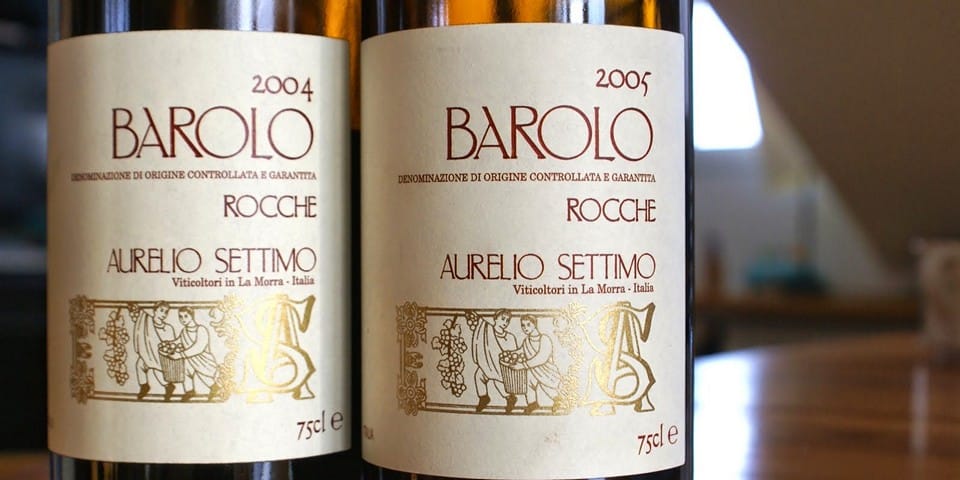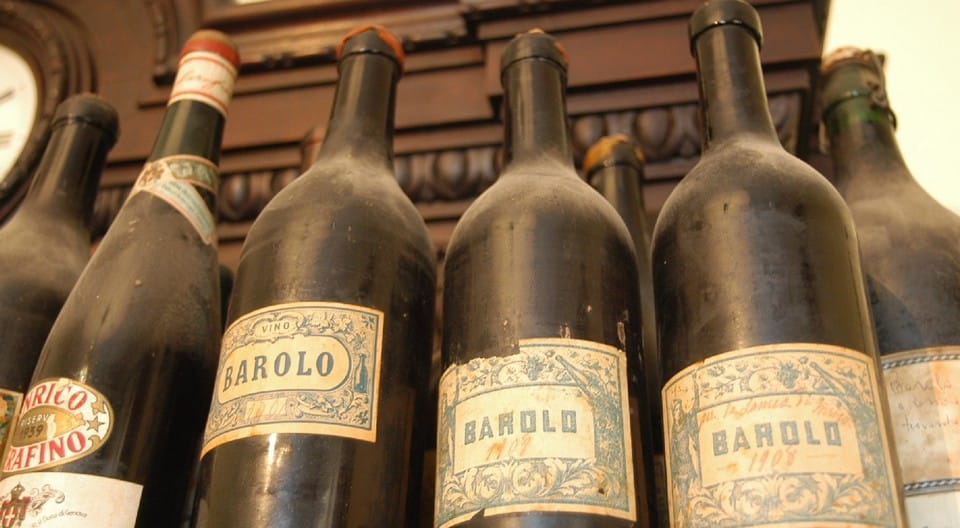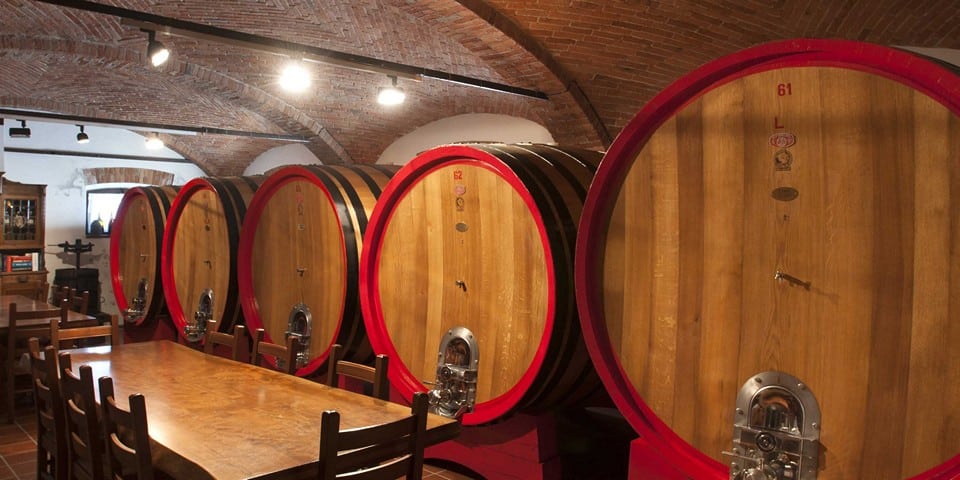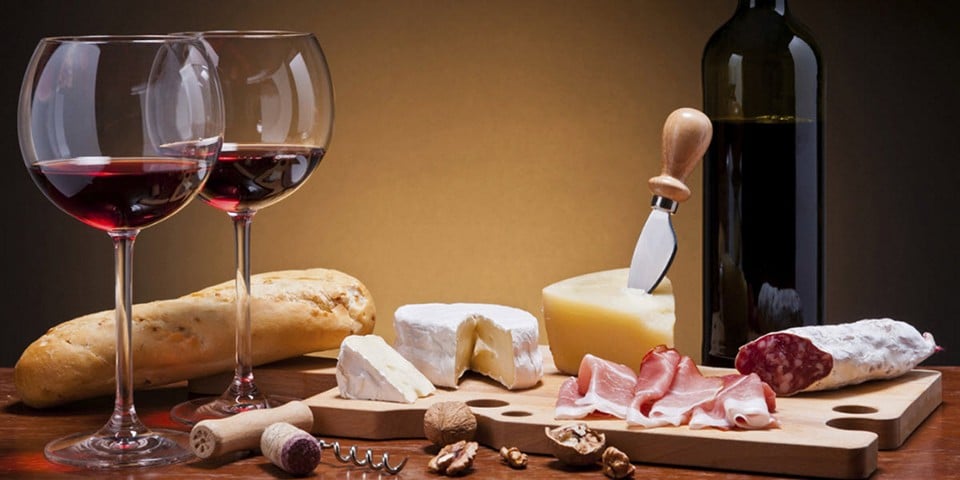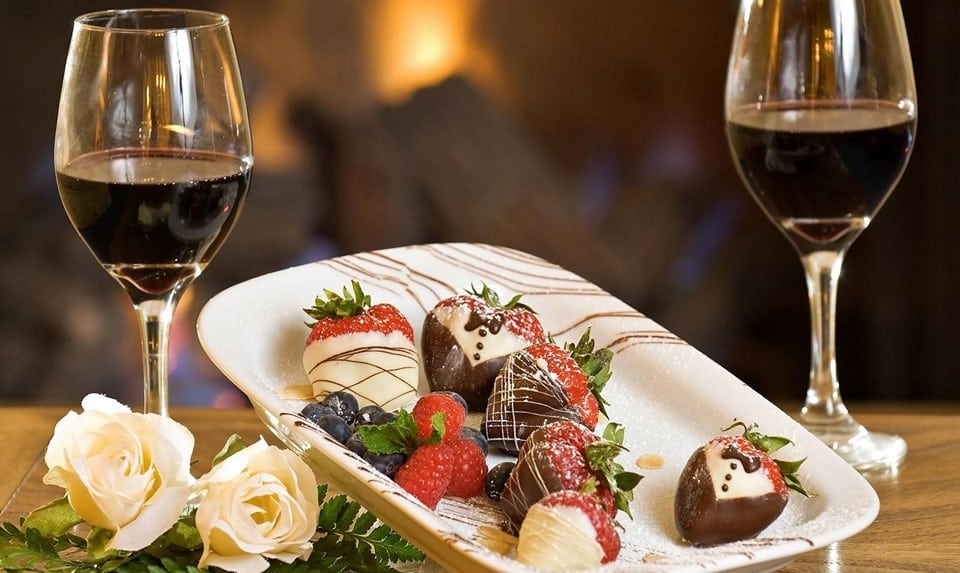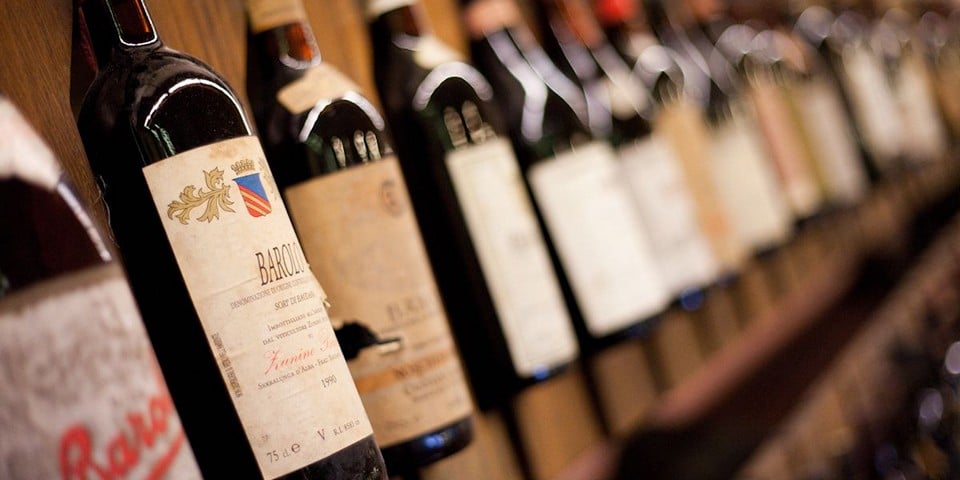It is impossible to imagine the winemaking tradition of Italy without Barolo, the king of wines. Like cream on milk, it stands above all other types of red wines in the world. Connoisseurs compare it to a beautiful person whom you get to know gradually.
Every time a bottle of Barolo is opened, it offers new and unique emotions and sensations. There is no need to fear this truly precious beverage. Our article serves as a free guide and a treasure trove of secrets about Piedmont wine.
Page Contents
Description
Barolo is a red wine from the Piedmont region (Piemonte), distinguished by the DOCG quality mark. It is made from Nebbiolo grapes. The berries have a thin red skin and are characterized by high acidity and tannins.
Barolo must be 100% Nebbiolo. In the 1990s, some winemakers attempted to legalize the inclusion of 10% of other grape varieties in the wine, but their efforts were unsuccessful.
The wine has a rich, full-bodied taste. It is often compared to French Pinot Noir due to its brick-red color and pronounced acidity. Barolo exhibits a fruity aroma with notes of flowers, resin, and dried herbs. It showcases a wide range of unique nuances, such as camphor, chocolate, wild thyme, eucalyptus, mint, mulberry, strawberry, tobacco, and white truffle.
It is important to note that despite general guidelines, there are differences in taste characteristics among wines produced in different locations. The main influence on the organoleptic profile of grape berries is the type of soil (clayey, loamy, clayey-sandy) on which they grow. For example, Nebbiolo grown on limestone soils in the commune of La Morra yields larger harvests and results in a softer, fruitier aroma. In Monforte d’Alba and Serralunga d’Alba, where less fertile sandy soils predominate, the wine produced is the most structured with an intense flavor. Such Barolo requires more time to mature.
According to the rules established by the category, the wine must be aged for a minimum of 38 months, with 18 months spent in oak barrels. The minimum alcohol content is 13%.
Historical Information
Compared to other Italian wines, whose history is deeply intertwined with grape cultivation and dates back to ancient times, the birth of Barolo is associated with the Risorgimento and the process of Italian unification.
Until the mid-19th century, France had a significant influence on many aspects of Italian society. Even wines that held esteemed places on aristocrats’ tables were imported from the Bordeaux and Burgundy regions. Local grape varieties, such as Nebbiolo, were primarily used for producing inexpensive sweet wines.
In order to improve winemaking techniques, Camillo Benso conte di Cavour invited the French oenologist Luis Oudart to Italy. Oudart succeeded in adapting Nebbiolo for the production of dry wine, which quickly gained widespread recognition.
His success was so immense that King Vittorio Emanuele II made the decision to convert his vineyards to the production of this new beverage. Barolo also became a favorite among the Turin nobility and the ruling House of Savoy. Since then, it has been referred to as the “wine of kings and the king of wines.”
In the 20th century, steps were taken to recognize the highest quality of Barolo officially. In 1934, the Consortium for Barolo and Barbaresco was convened for the first time. In 1966, the wine obtained the Denominazione di Origine Controllata (DOC) status, and in 1980, it achieved the Denominazione di Origine Controllata e Garantita (DOCG) status, which guarantees the wine’s origin and quality.
Production of Wine Barolo
The areas where grapes intended for the production of Barolo grow are strictly limited and include the territories of the communes of Barolo, Castiglione Falletto, Serralunga d’Alba, and parts of the municipalities of La Morra, Monforte d’Alba, Roddi, Verduno, Diano d’Alba, Cherasco, Novello, and Grinzane Cavour in the province of Cuneo.
Currently, the cultivation of Nebbiolo for Barolo winemaking covers an area of about 1,800 hectares. Special requirements are imposed on the territory. The altitude should be no less than 170 meters but not higher than 540 meters above sea level. The terrain is hilly and not overly sunny.
After the harvest, fermentation, and completion of the primary fermentation, the wine undergoes a stage of aging in oak barrels. The wood for the containers is mainly imported from Slavonia, although the use of French or American oak is widespread today.
The tannins released into the wine from the wood contribute to color stabilization and also promote the reduction of astringency. As a result of extended aging, the wine acquires a softer and rounder taste.
Barolo is an alcoholic beverage that requires a clearly defined aging period. It must age for at least 3 years from January 1st of the year following the grape harvest before being released to the market. For wines labeled “Riserva,” the aging period is at least 5 years.
To enhance the sensory characteristics of Barolo, blending wines from multiple harvests is allowed, but not exceeding 15% of the main wine. In any case, the added quantity is indicated on the label.
There is also a special type of flavored wine called Barolo Chinato. It is complemented with sugar, alcohol, and infusions of herbs and spices such as rhubarb, gentian root, cinnamon, coriander, vanilla, and mint. The choice of spices depends on the producer. Chinato is a highly aromatic and smooth beverage consumed as a digestif.
Which Barolo Should You Try
Getting lost in the world of fine wine is not difficult at all. There are numerous bottles on the shelves with the same name “Barolo,” but they differ in terms of harvest time and producer. As a reference point in Italy, the Vinibuoni d’Italia guide is published, which provides consumers with information about the best wines with an optimal balance of price and quality. The rating is based on two indicators: critics’ evaluations and customer opinions.
So, here is the Top 10 Barolo worth trying, based on the Vinibuoni d’Italia 2017 guide:
- Barolo DOCG “Bussia Dardi Le Rose” 2012, produced by Colla di Alba, priced at 35-42 Euros.
- Barolo DOCG 2012, produced by Silvio Grasso di La Morra, priced at 24-26 Euros.
- Barolo DOCG “Bricco Manzoni” 2012, produced by Silvio Grasso di La Morra, priced at 47-50 Euros.
- Barolo DOCG “Ravera” 2012, produced by Giovanni Sordo di Falletto, priced at 37-40 Euros.
- Barolo DOCG 2012, produced by Figli Luigi Oddero di La Morra, priced at 31-34 Euros.
- Barolo DOCG del Comune di Serralunga 2011, produced by Vite Colte di Barolo, priced at 35-38 Euros.
- Barolo DOCG “Le Coste di Monforte” 2011, produced by Cascina Amalia in Langhe di Monforte d’Alba, priced at 30-32 Euros.
- Barolo DOCG Riserva “Bricco Rocca Riund” 2010, produced by Cascina del Monastero di La Morra, priced at 35-38 Euros.
- Barolo DOCG Riserva “San Bernardo” 2010, produced by Palladino di Serralunga d’Alba, priced at 39-42 Euros.
- Barolo DOCG Riserva 2008, produced by Paolo Monzone di Serralunga d’Alba, priced at 46-49 Euros.
Difference from Barbaresco
Barolo and Barbaresco are both wines made from the Nebbiolo grape, but they do have some differences. They are produced in the Piedmont region of Italy and hold the prestigious DOCG classification. However, it is a misconception to consider them absolutely identical or the same alcoholic beverage. Let’s explore the differences between them.
Barolo is often referred to as the “king” and Barbaresco as the “queen” of wines. Here’s why:
- Barbaresco grapes are grown on soil with a higher sand content, while Nebbiolo grapes for Barolo are primarily harvested from clayey terrain.
- The minimum aging requirement for Barbaresco is 2 years, and if labeled as “Riserva,” it must be aged for 4 years. Barolo, on the other hand, matures for 3 and 5 years, respectively.
- Barbaresco exhibits a more elegant and soft taste profile with notes of red fruits and floral undertones. Barolo, in contrast, is renowned for its pronounced tannins and strict, spicy aroma.
In Italy, Barbaresco is often considered a wine for women due to its delicate nature, while Barolo is seen as a wine for men due to its robust character.
How and What to Pair with Wine Barolo
Despite its grandiose name as the “King of Wines,” Barolo can be enjoyed without waiting for special occasions. It is an ideal beverage for celebrations as well as everyday meals. While more prestigious types, such as Riserva, can come with a hefty price tag, there are also affordable options of excellent quality Barolo available.
Barolo, also known as “Piemont” in the wine glass, is best served at a temperature of 18-20 degrees Celsius (64-68 degrees Fahrenheit). Although, in general, any bulbous glasses with long stems and tapered mouths will suffice.
“His Majesty” pairs wonderfully with savory dishes of red meat, whether braised or grilled, as well as with game in all its forms. The wine also complements cheeses with rich flavors, but not overly spicy ones like Parmigiano Reggiano or Grana Padano. It is best to opt for Castelmagno or Gorgonzola.
With its intensely concentrated aroma of tar and rose, Barolo is an unmatched companion for truffles. When it comes to baked goods, it is considered a perfect match with dry, non-sweet biscuits. Given its richness and intensity, the wine can be enjoyed on its own without food, for example, as a relaxing drink between lunch and dinner.
The flavored Barolo Chinato is an excellent accompaniment to desserts, especially those with a high cocoa content. It can also be consumed hot (known as “punch”) or as an aperitif.
There are numerous recipes that use Barolo to impart an extraordinary flavor to dishes. Among the most popular are meat braised and cooked with wine, ragù and risotto al Barolo, sturgeon and rabbit marinated in alcohol.
It’s worth noting that experts recommend consuming Barolo within 5-10 years from its production, although wines aged for 20-25 years are also available for sale.
Now you are equipped with everything you need not to disappoint “His Majesty.” Of course, you can purchase a bottle of Barolo in your own country, but remember that the best accompaniment for this wine is the luxurious air of Italy.
Interesting Facts
- Barolo, known as the “King of Wines,” hails from the Piedmont region in northwest Italy. Its history dates back to at least the 13th century, making it one of the oldest wine regions in Italy.
- The production of Barolo is strictly regulated. It must be made from the Nebbiolo grape variety and aged for a minimum of three years, with at least two years in oak barrels. For Riserva Barolo, the aging requirement extends to five years, ensuring depth and complexity.
- The distinct flavor profile of Barolo is characterized by its bold tannins, high acidity, and notes of red fruit, tar, roses, and earthy undertones. These elements contribute to its remarkable aging potential, with well-made Barolos evolving and improving for several decades.
- Barolo is produced in several designated sub-regions within the Barolo DOCG, including Castiglione Falletto, La Morra, Serralunga d’Alba, and more. Each sub-region adds its own unique characteristics and terroir to the wine, resulting in subtle variations in flavor and style.
- The soil composition in Barolo vineyards plays a crucial role in shaping the wine’s character. The region’s calcareous clay soils, known as “tuff,” combined with the climate and elevation, contribute to the grapes’ phenolic development and lend Barolo its renowned structure and complexity.
- Barolo is often referred to as a wine that requires patience. It typically benefits from aging in the bottle for several years to soften its tannins and allow the flavors to integrate harmoniously. Many Barolos reach their peak after 10-20 years, showcasing the wine’s full potential.
- The Barolo region celebrates its wines with the annual event “Barolo Night.” Held on the third Saturday in July, wine lovers gather to enjoy Barolo together, highlighting the wine’s rich heritage and its significance in Italian wine culture. This event showcases the community’s passion and appreciation for this exceptional wine.
 Italy for me From Italy with love
Italy for me From Italy with love


